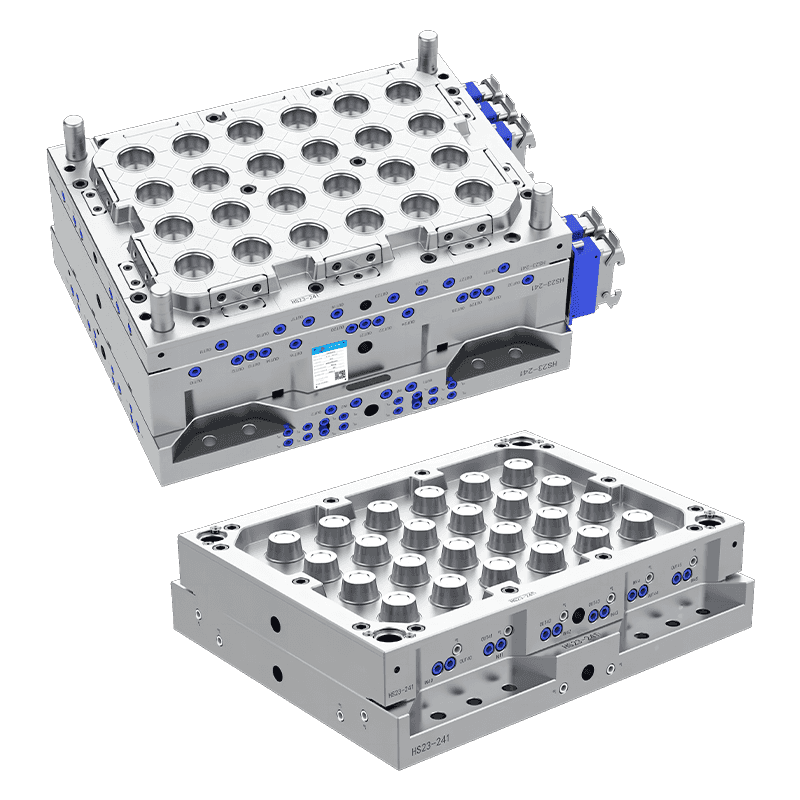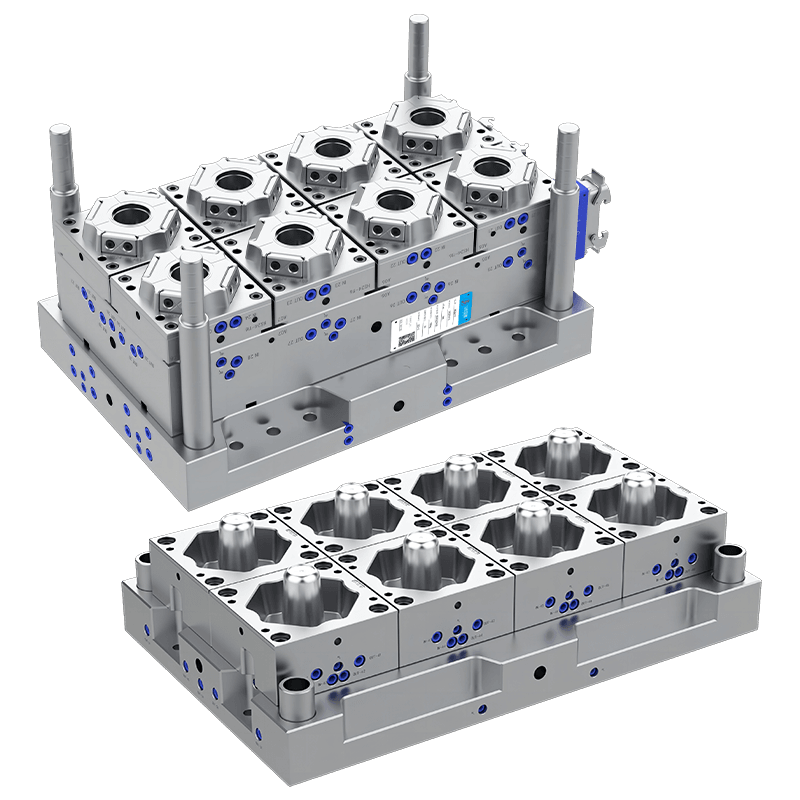Plastic spoon and fork mold: the evolution from prototype to modern.
The evolution of plastic spoon and fork molds is closely related to the overall development of plastic molds. The following is the evolution of plastic spoon and fork molds summarized based on search results:
Early Origin:
The initial development of plastic molds can be traced back to the early 20th century. With the widespread application of plastic products, plastic molds began to emerge. At this time, plastic spoon and fork molds, as a subdivision of plastic molds, also began to appear.
Early Development:
In the 1930s, thermoplastic molds began to gradually replace metal molds and became the main tool for the production of plastic products. This provided a technical basis for the development of plastic spoon and fork molds.
During this period, the design and manufacture of plastic spoon and fork molds mainly relied on traditional machining methods such as turning, milling, and grinding. The precision and efficiency of the molds were relatively low, but they could meet basic production needs.
Rapid Development Period:
After the 1950s, with the rapid development of the plastics industry, the mold industry entered a stage of rapid development. During this period, the application of advanced CNC machine tools and computer-aided design and manufacturing (CAD/CAM) technology greatly improved the precision and efficiency of mold manufacturing.
For plastic spoon and fork molds, the application of CAD/CAM technology makes mold design more precise and fast and improves mold manufacturing efficiency and product quality.
Intelligent manufacturing era:
At the beginning of the 21st century, with the rapid development of information technology and automation technology, the mold industry entered the era of intelligent manufacturing. The degree of digitization, networking, and intelligence in mold design, manufacturing, and production processes continues to improve.
For plastic spoon and fork molds, the application of intelligent manufacturing technology makes the mold manufacturing process more efficient and precise, while reducing production costs and manpower input. In addition, intelligent manufacturing also makes mold manufacturing more flexible and able to adapt to changes in market demand more quickly.
Environmental protection and sustainable development:
In recent years, with the continuous improvement of environmental awareness, the manufacturing of plastic spoon and fork molds has also begun to focus on environmental protection and sustainable development. For example, using recyclable plastic materials to manufacture molds, and optimizing mold design to reduce waste and energy consumption in the production process.
In general, the evolution history of plastic spoon and fork molds reflects the continuous progress and development of plastic mold technology. With the continuous innovation and progress of technology, future plastic spoon and fork molds will be more efficient, precise, environmentally friendly, and sustainable.
The Function and Importance of High-Quality Plastic Fork Injection Mould
In the world of manufacturing, precision and efficiency are crucial, especially when it comes to producing everyday items such as plastic forks. At the heart of this production process is the High Quality Plastic Fork Injection Mould, a vital component that ensures the functionality and durability of the final product.
The High Quality Plastic Fork Injection Mould serves as a critical tool in the production of plastic forks. This mould is designed to create the fork’s specific shape and ensure that every unit meets the required standards of quality. By using advanced technology and high-grade materials, manufacturers can achieve precise and consistent results, making the High Quality Plastic Fork Injection Mould a cornerstone of efficient production.
One of the primary functions of the High Quality Plastic Fork Injection Mould is to create detailed and accurate fork designs. The mould is engineered to produce forks with uniform dimensions and characteristics, ensuring that each piece is identical to the next. This uniformity is essential for maintaining product quality and meeting consumer expectations. The High Quality Plastic Fork Injection Mould achieves this through meticulous design and high-precision manufacturing processes.
Durability is another critical aspect of the High Quality Plastic Fork Injection Mould. Given the repetitive nature of the injection moulding process, the mould must be robust enough to withstand continuous use without deteriorating. High-quality materials, such as hardened steel or aluminum, are often used to manufacture these moulds to ensure their longevity. This durability is crucial for maintaining the efficiency and cost-effectiveness of the production process.
The efficiency of the High Quality Plastic Fork Injection Mould directly impacts the overall production rate. A well-designed mould facilitates quicker cycle times, allowing for a higher volume of plastic forks to be produced in a shorter period. This increased efficiency not only boosts productivity but also helps in reducing manufacturing costs. Therefore, investing in a High Quality Plastic Fork Injection Mould can bring about significant economic benefits for manufacturers.
Precision in the production of plastic forks is achieved through the advanced technology embedded in the High Quality Plastic Fork Injection Mould. Modern moulds are equipped with sophisticated control systems that ensure accurate temperature regulation and pressure control during the injection process. This technological advancement allows for the creation of plastic forks with intricate designs and fine details, which might otherwise be challenging to achieve.
Another important function of the High Quality Plastic Fork Injection Mould is its role in ensuring the safety and reliability of the final product. Plastic forks produced using high-quality moulds are less likely to have defects or inconsistencies that could affect their performance. The precision and attention to detail in the moulding process contribute to producing forks that are safe for use and reliable under various conditions.
Contact Us
Email: [email protected]; Or fill out the contact form below.

 English
English 中文简体
中文简体 русский
русский Español
Español Français
Français




